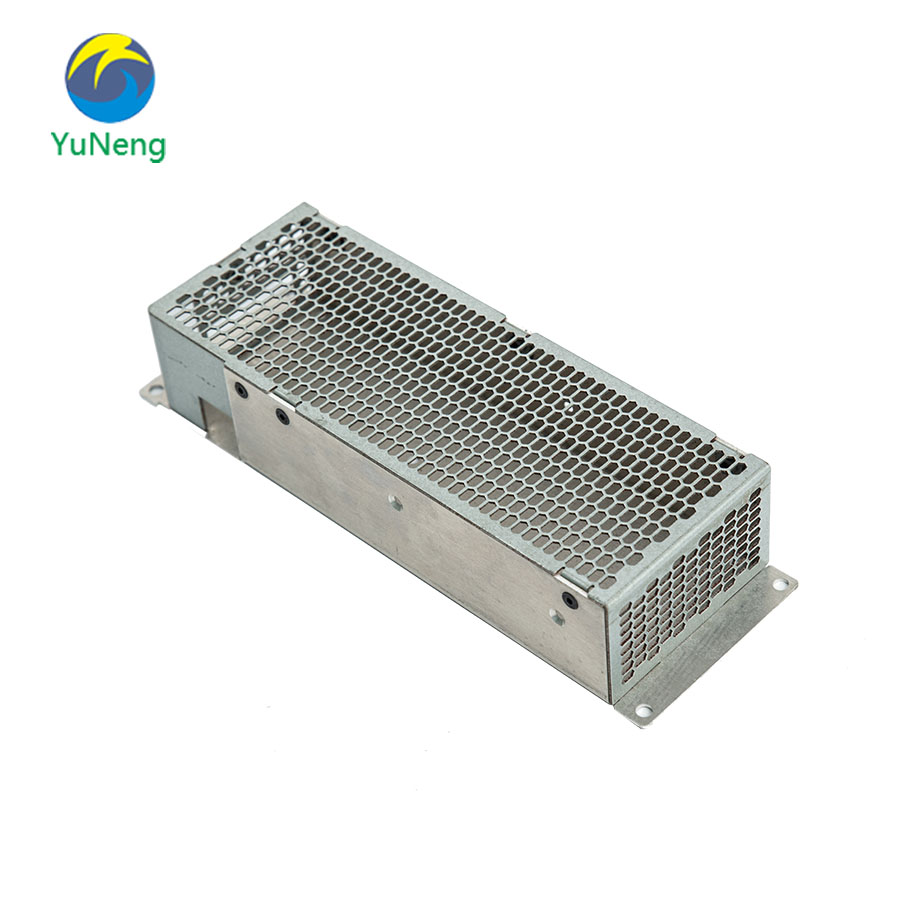Practical Exploration of Power Resistor Enclosure Design and Applications
In modern industrial fields, power resistors are essential components in power electronic devices. They not only absorb and dissipate excess energy but also protect the circuits. However, the design of power resistors extends beyond just the selection of the resistive material; the design of the enclosure is equally crucial. The enclosure not only supports the resistor structurally but also addresses multiple tasks, including heat dissipation, protection, and environmental adaptation. This article explores the design principles, material selection, heat dissipation performance, and practical applications of Power Resistor Enclosures.

Material Selection and Its Importance
The material of a power resistor enclosure is a key factor in ensuring its performance and long-term stability. The enclosure needs to have good structural strength and corrosion resistance while also effectively conducting and dissipating heat. Aluminum alloy is one of the most commonly used materials for enclosures due to its excellent thermal conductivity and lightweight properties. Aluminum alloys effectively lower the working temperature of power resistors and reduce the risk of overheating. Studies have shown that the thermal conductivity of aluminum alloy typically ranges from 140 to 160 W/m·K, which is significantly higher than the 50 W/m·K of steel. This characteristic allows aluminum alloy enclosures to rapidly dissipate the heat generated under high-power loads, thereby improving the efficiency and reliability of the resistor.
A certain company used aluminum alloy enclosures in their high-power resistor designs and combined them with optimized Heat sink designs to maintain good heat dissipation even under long-term, high-load operation. Experimental data shows that, compared to traditional steel enclosures, the power resistors with aluminum alloy enclosures had a 30% reduction in temperature rise under high-load conditions, significantly extending the lifespan of the equipment.
The Relationship Between Heat Dissipation Performance and Design
Another key design factor for power resistor enclosures is heat dissipation performance. Power resistors generate a significant amount of heat during operation, and if this heat is not effectively dissipated, it may lead to overheating or failure. Therefore, the enclosure's heat dissipation design must fully consider methods such as heat conduction, convection, and radiation.
Heat sink design is one of the most important means of improving heat dissipation efficiency. Research indicates that the size and arrangement of heat sink fins directly impact heat dissipation. In a certain factory, the design team optimized the length and spacing of the fins, and fine-tuned their layout to maximize air circulation and heat dissipation. As a result, heat dissipation performance increased by nearly 40%, allowing the resistor to operate within an efficient temperature range, ensuring stable operation.
Additionally, the overall structure of the enclosure must consider the directionality of heat flow. In one factory, the design of the power resistor enclosure incorporated smooth transitions between the internal and external walls, effectively reducing heat flow resistance and further optimizing heat dissipation.
Protection Functions of the Enclosure
The power resistor enclosure is not only a structural support for the resistor but also needs to protect the resistor from external environmental damage. In many applications, power resistors are exposed to harsh operating environments, such as high temperatures, high humidity, dust, or chemical corrosion. Therefore, the protection function of the enclosure is critical.
The protection rating (IP rating) of the enclosure is a standard for measuring its ability to resist water and dust. For example, an IP65-rated enclosure can fully prevent dust from entering and can resist water jets from any direction. This is especially important for resistors used in industrial environments. A certain company adopted an IP65-rated design for its power resistor enclosures, successfully preventing dust and moisture from entering, ensuring that the resistor could operate reliably in extreme environments. This design has significantly extended the lifespan of the equipment and reduced the failure rate, particularly in frequency converters and motor control systems.
Modular Design and Ease of Maintenance
In addition to heat dissipation and protection functions, the design of the power resistor enclosure must also consider ease of installation and maintenance. In some complex industrial applications, maintenance is a critical aspect, and simplifying maintenance operations can reduce downtime.
Modular design is an effective way to address this issue. By designing the power resistors as removable modules, maintenance personnel can easily replace faulty modules without disassembling the entire system. This not only improves the maintainability of the equipment but also greatly shortens downtime.
A certain factory adopted a modular design for its power resistor enclosures and incorporated quick-connectors and standardized interfaces, making installation and replacement simpler. According to the statistics from the factory, after adopting modular design, maintenance time was reduced by approximately 30%, significantly improving the overall operating efficiency of the equipment.
Environmental Adaptability and Durability
In practical applications, power resistor enclosures often face extreme operating conditions, such as high temperatures, low temperatures, humidity, and mechanical shocks. This requires the enclosure to not only have good high-temperature and corrosion resistance but also to maintain efficient operation under these harsh environmental conditions.
To meet these challenges, a certain factory chose high-temperature-resistant alloy materials for its enclosures and conducted shock and vibration testing on the enclosures. Experimental results showed that these enclosures could operate stably in temperatures ranging from -40°C to +180°C and maintained their structural integrity under long periods of mechanical shock and vibration. This design is particularly suitable for power equipment in industries such as oil and gas, where high temperatures and harsh conditions are common.
Conclusion
The design of power resistor enclosures is a complex system engineering task that involves material selection, heat dissipation design, protection functions, and environmental adaptability. By optimizing materials, designing heat sinks, improving protection levels, and introducing modular designs, the performance and reliability of power resistors can be significantly enhanced. As industrial equipment continues to demand higher efficiency and reliability, the design of power resistor enclosures will become more refined, driving the power electronics industry toward greater efficiency, environmental sustainability, and intelligence.









